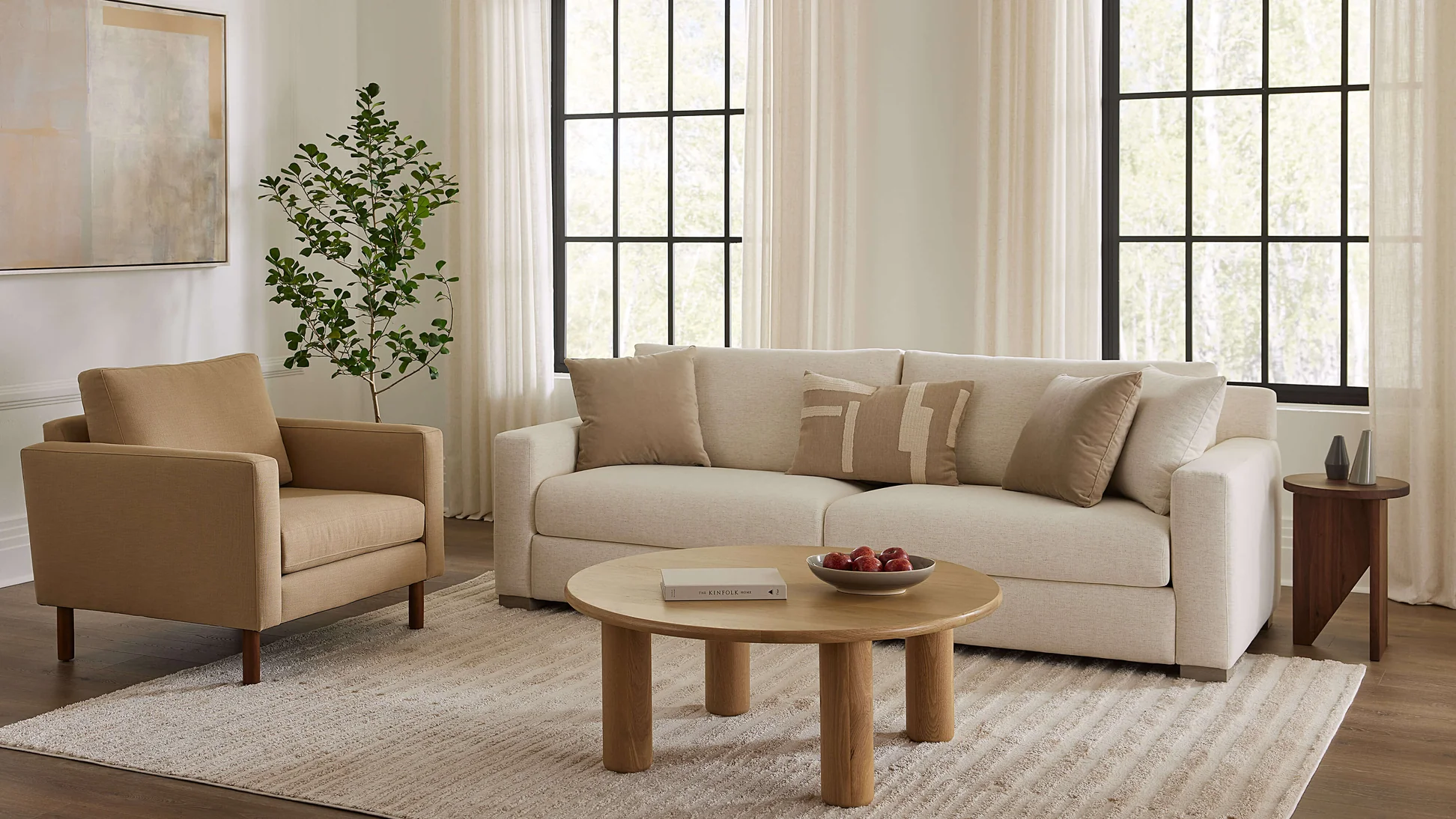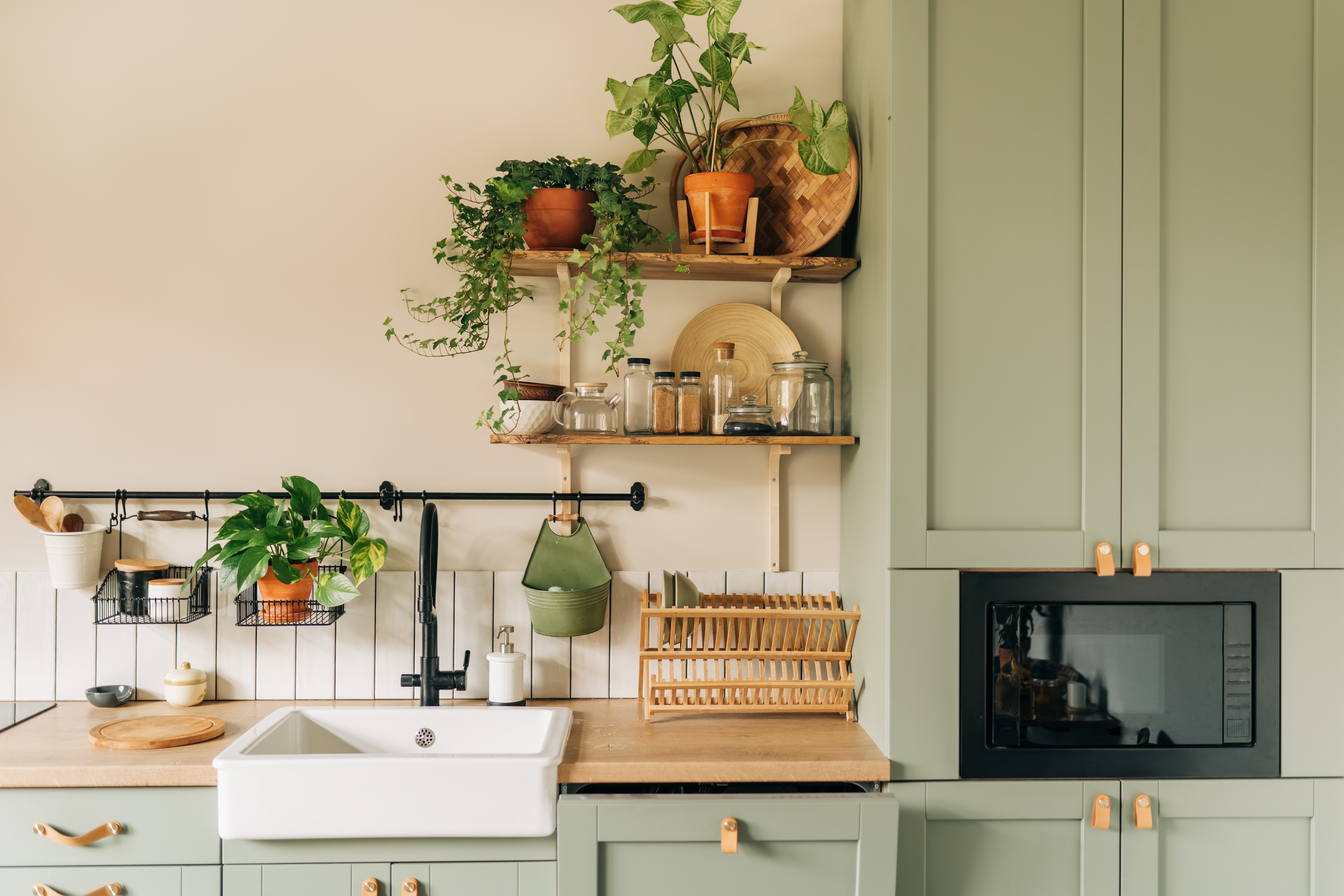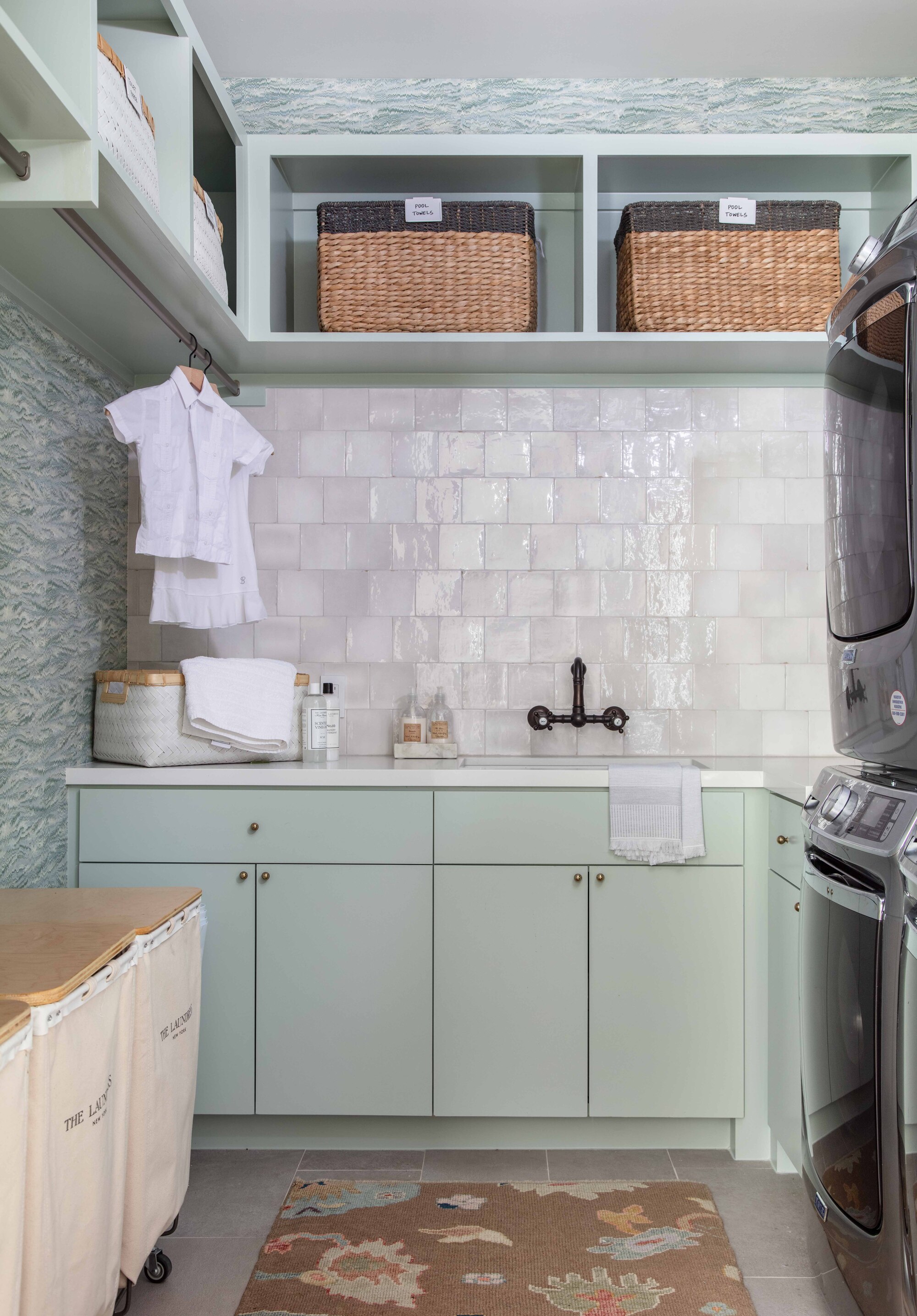
No one wants to live in a damp and humid environment. Condensation can often lead to health issues and problems within the home. A damp space can also be a victim of mold and possible damage to furniture, which is why it's important to find a solution as soon as possible if you're dealing with condensation.
Despite the many dehumidifier benefits, they may not be the most affordable, aesthetic, or even practical. That's why finding methods that work for everyone is key. Thankfully, there are a few easy-to-follow and budget-friendly steps you can take to dehumidify a room — without a dehumidifier.
We spoke to the experts to find out the best ways to tackle a damp home and how to dry it out without a dehumidifier. Here's what they had to say about it.
How to Dry a Room Without a Dehumidifier
Aside from the cost to run a dehumidifier, it may not be something you want in your home. With that being said, you'll still need to dry your space if you're dealing with a lot of moisture.
"Drying a room with condensation helps prevent mold and mildew," says HVAC expert Brad Roberson from Aire Serv, a Neighborly company. "The growth of mold can create health problems like allergies and respiratory issues. Excess moisture can also lead to the deterioration of drywall, wood, and other building materials."
Here are five ways you can dehumidify your home.
1. Ventilate Your Home

Whether it's kitchen ventilation, or you're looking to air out your living room, you will need to do it regularly to help regulate the air in your space, as well as the moisture.
Erwin Miciano, expert and founder of Semi Homes, says: "Ventilation is one of the most straightforward and effective methods. By simply opening windows or ensuring proper airflow, you can significantly reduce moisture build-up — which is key to maintaining a property’s value and avoiding costly issues like mold."
And HVAC expert, Brad Roberson agrees. He says you should "increase ventilation by opening windows, using exhaust fans, and leaving doors open between bedrooms to promote better airflow."
2. Wipe Down Windowsills Regularly

Another method to help get rid of condensation without a dehumidifier would be to regularly wipe down your windowsill and window frames. Doing this will help prevent mold from growing and protect your wooden windowsills from damage. Microfiber cloths, like this MR.SIGA Microfiber Cleaning Cloth from Amazon, is a great choice when it comes to removing any excess moisture or dirt. So, if you want to avoid those kitchen window mistakes, you better get cleaning to avoid any damage.
Rhonda Wilson, a cleaning expert from FreshSpace Cleaning tells us: "When you notice condensation, don’t just leave it there. Grab a cloth or paper towel and wipe it up to prevent mold or water damage. And while you’re at it, check the window frames for any weep holes or ventilation channels to make sure they aren’t blocked."
3. Avoid Overwatering Plants

If you're hoping to get rid of condensation in the home, you may want to learn the basics of watering houseplants to help avoid any overwintering. Overwatering can damage your beautiful bloom and also lead to soggy soil and unwanted moisture.
"Overwatering your plants can increase the humidity in your home," explains Rhonda. "To keep condensation at bay, water them just enough. Let the top layer of soil dry out between watering, and ensure your pots have good drainage."
The expert says placing plants near windows can also help spread out the moisture they release instead of building up in one area. You can also opt for adding houseplants that help clean the air — which in turn will bring in health benefits and a cleaner home.
Plants That Dehumidify Your Home
Price: $45.98
Was: $51.09
This beautiful golden pothos, also known as 'devil's ivy,' is the perfect little indoor climbing plant and is known to help clean the air while also absorbing moisture. This plant can thrive even in difficult conditions, making it low-maintenance and easy to care for.
Price: $25
This succulent plant is known to reduce moisture and makes a striking addition to any space. This beauty requires very little attention, but ensure you know how often to water aloe to keep happy and healthy.
Price: $14.24
Was: $18.99
For the best indoor flowering plants that need little or no sunlight, the peace lily is a true companion. Peace lilies can help clean the air and remove air pollutants. This plant is around 4" in Diameter and approximately 8" Tall.
4. Dry Wet Clothes In a Well-Ventilated Area

If you're working with limited space and wondering how to store clothes, especially the ones straight out of the laundry machine, you might want to avoid bringing them into a space with minimal ventilation.
"Hanging your clothes outside is ideal for keeping indoor humidity down, but if that’s not an option, use a well-ventilated room like a laundry area with an exhaust fan or a bathroom with a window," says Rhonda. "Good airflow makes all the difference."
5. Use Moisture Absorbing Tools

Lastly, there are other moisture-absorbing tools you can add to your home to help keep spaces nice and dry. Some of the best air purifiers can also be found in the comfort of your own home.
"Use baking soda, silica gel packs, and activated charcoal to remove moisture from rooms," says Brad. "These items can be placed in areas like closets, windowsills, and other areas of the room."
Silica gel packs are great for tackling small pockets of condensation and you can get your Silica Gel Packets Desiccants from Amazon, priced at just $14.99. Brad continues: "Activated charcoal is porous and allows for moisture to be pulled from the air." As for baking soda, he says this "common household item that acts as a moisture absorber is good to use around windows or damp areas."
Shop moisture absorbers + ventilators
Price: $10.39
Was: $13.79
Another method that has become quite popular to dehumidify a room is the salt method. All you need to do is put rock salt (like this Himalayan Chef Pink Himalayan Salt) in a bowl or container and place it by your windowsill. We love this Totally Bamboo Salt Cellar Bamboo Storage Box. It's compact and can carry your salt while blending in perfectly with your decor.
Price: $29.99
These moisture-absorbing stones are easy to use and can help eliminate odors in clothing and shoes. You can prevent unwanted moisture from building up by adding these stones to your home decor — they blend in perfectly within the home.
Price: $229
Color: Gunmetal
Now, this is not your standard-looking fan. It's unique and has a sense of allure. By Blending functionality with fashion, this piece will certainly brighten up your home and get it feeling fresher than ever. This fan will help ventilate your room when you need it and is perfect for countertops, side tables, or even office desks.
FAQs
What is the best thing to absorb condensation?
There are a few handy little tools you can use to help absorb condensation in different corners of the home. For example, these Vacplus Moisture Absorbers, Hanging Closet Dehumidifier Bags from Amazon will help remove and eliminate odor and moisture from your closet. Or these LotFancy Silica Gel Packets from Amazon, which users have rated 4.6/5 stars.
If you're looking for a good DIY hack, try baking soda. This pantry favorite will help remove dampness from a space. All you need to do is add some baking soda in a small bowl and place it in the room you'd like to dehumidify.







